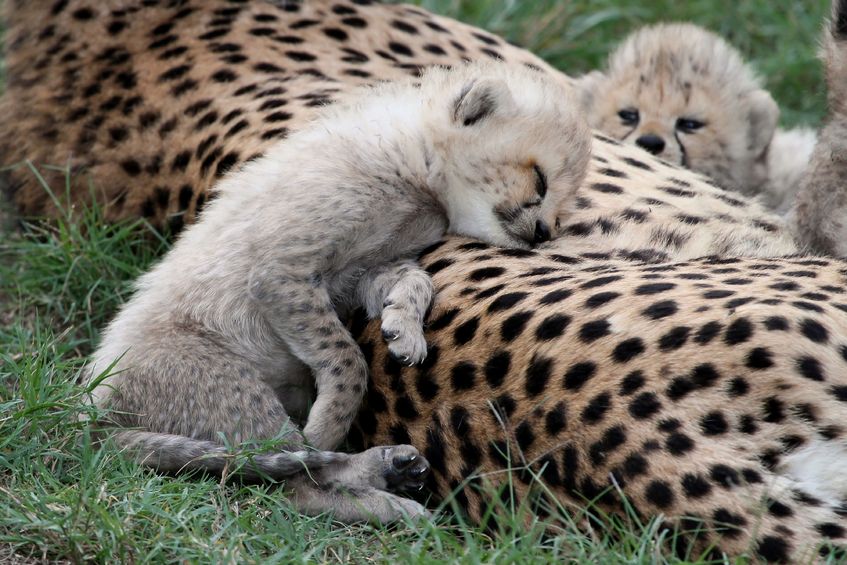Thanks to the hard dedication of sleep researchers around the world, we know that animals have varying sleep patterns and habits.
According to Sleep Education, giraffes can go without sleep for weeks, while brown bats sleep for nearly the whole day. The golden dormouse balances itself on the branch of tree to sleep, and any slight quiver of the twig wakes it up immediately. So what does this all have to do with the way humans sleep? The answer is simple, to understand human sleep, researchers must study animals as well.
Rats have similar sleep needs to humans, requiring rest to become alert and learn new tasks for the upcoming day. Certain canines have even helped scientists in treating serious sleep disorders.
The common denominator of both non-human mammals and humans is the existence of rapid eye movement (REM) sleep, the stage of sleep that is associated with dreams. Both humans and all other mammals display the same level of brain activity and increased heart rate variability during REM sleep. For example, dogs often bark or twitch their legs during REM sleep; platypuses make movements imitating the process where they kill crustacean prey before eating it; and humans often talk in their sleep. All mammals have the same fundamental sleep cycle. During REM sleep, the same kind of eye movement, paralysis and twitching can be observed across species.
Scientists will probably never know if animals dream during REM sleep, as humans do. There is simply no way to tell as we can with humans, scientists simply ask them. However, scientists do know the brain wave pattern during REM sleep among animals is similar to humans.
How Much Sleep Is Enough For Animals?
Sleep schedules greatly vary from animal to animal. It is proposed that the differences are based on the brain metabolism rate of the animal. Smaller animals tend to require more sleep as they often have higher rates of brain metabolism, while larger animals generally sleep less.
All the animals that sleep less than 4 hours of sleep on average are large land mammals, such the elephant, the cow and giraffe. Land grazing animals also use so much time for eating that they don’t have much time left for sleep. Horses stand 98% of the time, making it difficult to obtain REM sleep.
Other experts believe that sleep schedules are based on the set of dangers each animal faces. Birds primarily sleep from an anti-predator point of view, as they sleep in vulnerable areas. Some birds sleep with one eye open to keep track of predators. REM sleep is deliberately short in birds, lasting only seconds, reducing the amount of time they can be attacked when they are stationary. Other animals prefer safer spots to get sleep. The African Papio baboon sleeps on its heels at the tops of trees in an awkward position that it difficult to get a sound sleep.
Marine mammals in particular have unique sleep habits. When most species of marine mammals are asleep, there is always one hemisphere of their brain that is awake. This allows them to swim and surface to breathe when they are sleeping. Many experts believe that understanding the sleep of marine mammals will unlock the mysteries of human sleep.
Man’s Best Friend Contributes to Treatment of Sleep Disorders
Scientists struggled to understand the causes of narcolepsy for years. The key to helping treat the disease came in the form of a four legged creature, the dog. In the 1970s, major advances were made by William Dement MD, PhD, when he learned that certain dogs displayed similar symptoms of narcolepsy as humans: sudden collapse and muscle weakness leading to near paralysis.
These initial observations led to the identification over 20 years later of the narcolepsy-causing gene in dogs, hypocretin receptor 2, by Emmanuel Mignot, MD, PhD, at Stanford University. Further studies by Siegel and Mignot showed that humans who suffer from narcolepsy had a severely reduced amount of the narcolepsy-preventing chemical hypocretin in their brains. Siegel also discovered that injecting hypocretin in dogs reduces the degree of some symptoms. These findings suggest that it may be possible to design drugs that replace the missing hypocretin molecules in patients with the disorder.
As researchers continue to study the sleep patterns and habits of animals, they continue to maximize the potential to benefit human brain and sleep disorders. New clues to the human brain are being discovered every day thanks to animals. You may want to give your pet a pat on the back!


No comments yet.